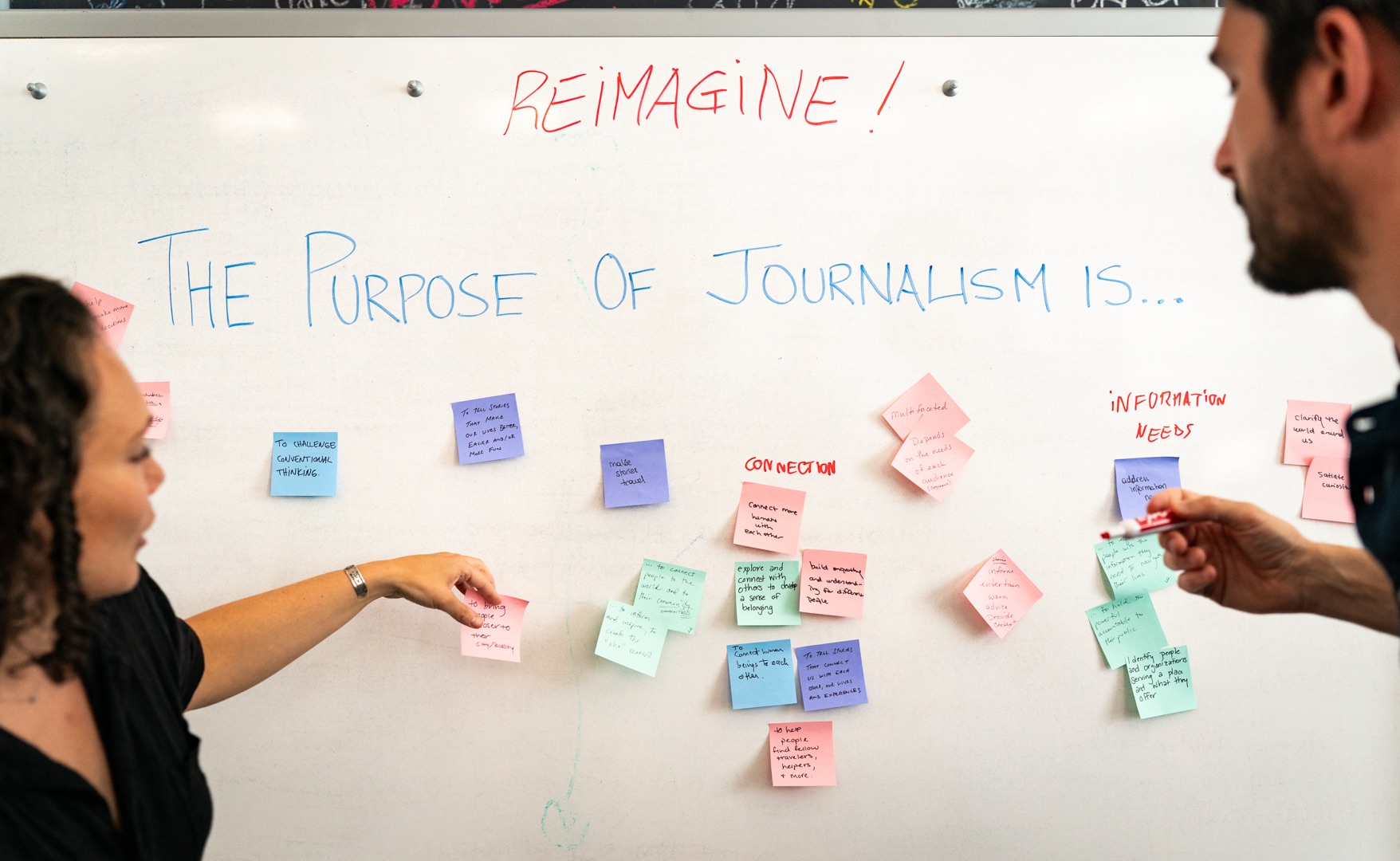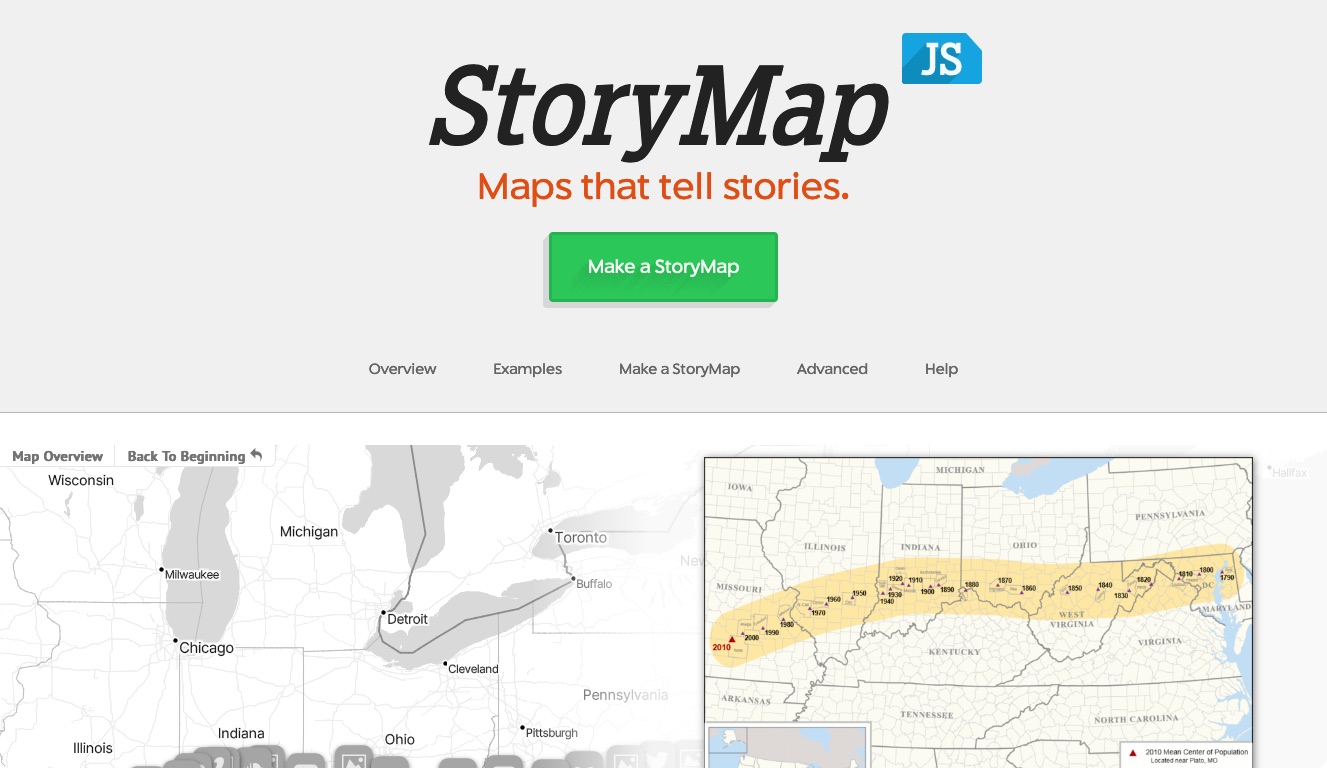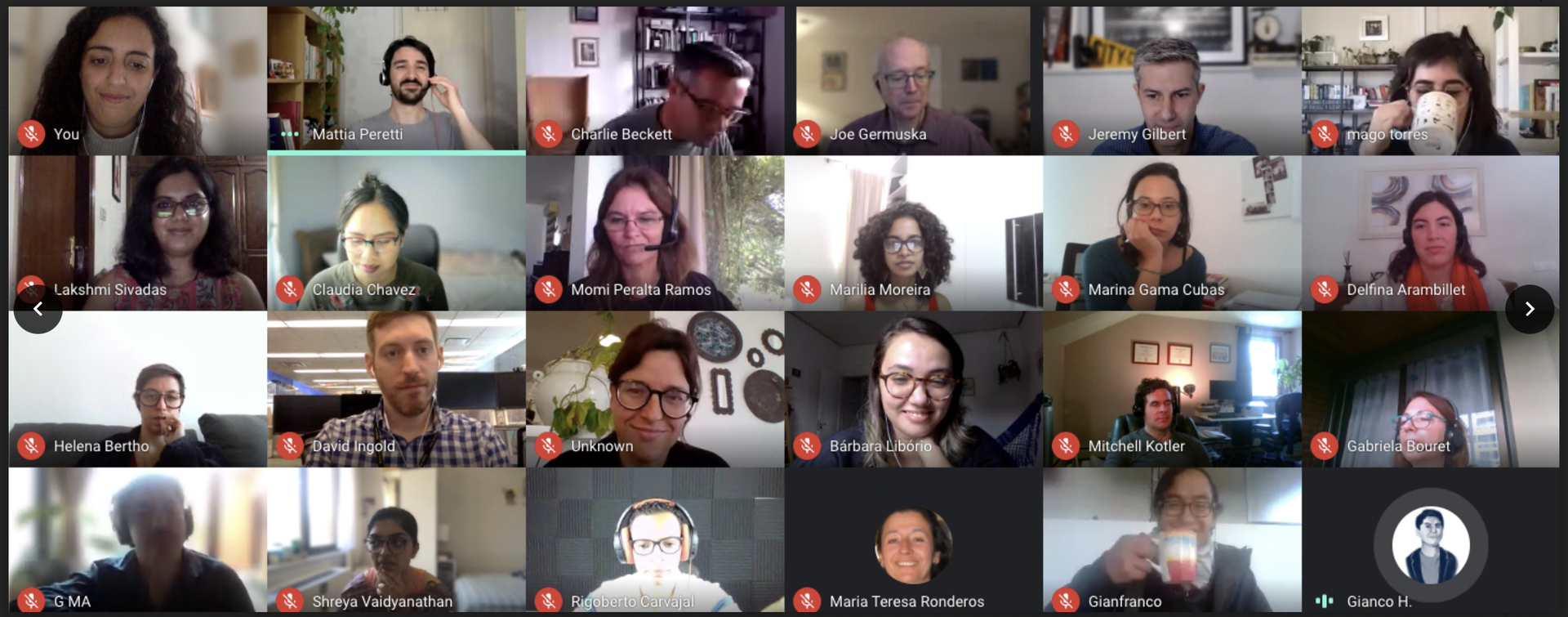This month saw the debut of the first ever Journalism School Hackathon, hosted by the UNC School of Journalism and Mass Communication. It was an exciting opportunity for forward-thinking and tech-savvy students from across the country to come together and use their combined powers to work on challenges a few local news outlets had developed. The participants were tasked with maintaining a focus on creating products that would be feasible, desirable and, perhaps most importantly, viable in the real world.
This wasn’t my first hackathon, but it was the first I’d been to that brought the business problems looming over today’s news industry in to the mix. It was also my first with more journalists than developers, a positive sign that journalism schools are training their students to participate more directly in the technical changes helping to upend the media landscape.
Needless to say, things played out a little differently with this unique format and collection of thinkers. There was less time coding and more time brainstorming. Less time designing and more time interviewing potential users. Less time tinkering and more time pitching.
The Yellow Pirates are rocking human-centered design today at #JschoolHackathon pic.twitter.com/eErwoEhaVX
— Robyn Tomlin (@robyntomlin) May 31, 2014
As someone accustomed to hacker-heavy hackathons this came as a surprise, but it also provided great opportunities for growth.
It’s undeniable that news outlets and journalists themselves are facing big money problems with the media industry as a whole still feeling the disruptive effects of the Internet. Being forced to think about these effects on future news products and ventures was a great exercise for journalists eager to move from the role of reporter to that of entrepreneur or product manager, and to think about the business problem that students are frequently shielded from in the classroom.
Talks from knowledgeable and relevant sources such as Mark Briggs of Journalism 2.0 and David Jones of Bull City Venture Partners pointed out holes in my current knowledgebase and provided great avenues for further study, highlighting the importance of selling, and books such as The Lean Startup, and The Four Steps to the Epiphany. I was able to put some of the discussed techniques into practice just a few days later while presenting a tool I helped create outside of the Hackathon, Trendable.
And even aside from all the opportunities for growth, it was a ton of fun. Developers aren’t always the most social people, but being surrounded by fellow journalists made for lots of interesting conversation (check out the #JschoolHackathon tag on Twitter). Brainstorming with fellow journalists was a blast as we continuously pushed ideas to the next level. Without as much focus on building things we could focus on the ideas and figure out how to make them workable, no matter how crazy they might seem on the surface.
Naming is always the hardest part! #JschoolHackathon @namccrate @NeilTHolt pic.twitter.com/rqq3PcEZLS
— Hrisanthi Kroi (@HrisanthiKroi) May 31, 2014
However, there were some drawbacks with the format. The beauty of hackathons is that people of diverse skillsets are brought together to solve problems and create as much as can be created in a weekend. While there were certainly some cool ideas broached in the UNC Hackathon I would have really loved to leave the weekend with something tangible. While some products promised a future of viral content that would educate the world, we didn’t actually finish with anything, and to me that’s a shame.
That said, it was a wonderful weekend and a great sign that journalism schools are moving their students in the right direction. If future journalism hackathons can find a way to maintain the high points – the networking opportunities, the chances to expand knowledge and the fun, and inclusive atmosphere – while shifting the focus somewhat to embrace the developing talent present, they will really be onto something. I can’t wait to see what happens at next year’s Journalism Hackathon, which was already being talked about even before this year's inaugural event ended.
About the author





